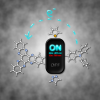Modernising models to diagnose and treat disease and injury
Computer modelling techniques and visualization software packages have been important resources for biomedical engineering research for decades. In New Zealand, a group of University of Auckland researchers have been at the heart of a movement to re-envision some of these tools with open-source approaches and standards-compliant practices. The results will not only enable new combinations and better linking of computational models, they will also improve researchers’ understanding of physiological functions and abilities to diagnose or treat injury or disease.
Since 2005, Chris Bradley, a Senior Research Fellow at the Auckland Bioengineering Institute (ABI), has been leading an open-source reworking of the CMISS (Continuum Mechanics, Imaging, Signal processing and System identification) programme. CMISS is a set of libraries and applications widely used in bioengineering to support computational modelling and visualisation. It was created in 1980 by Peter Hunter, the current Director of the ABI and a University of Auckland Professor of Engineering Science. Prof. Poul Nielsen and Prof. Andrew McCulloch also made major early contributions to the original CMISS packages.
Bradley’s updated version of the programme, called OpenCMISS, aims to integrate modern programming languages, data structures, and high performance hardware.
“This significant re-engineering effort represents a complete upgrade in functionality and modelling capability, particularly in terms of increased ability to optimise simulation performance on high performance, and in particular distributed, architectures,” he says.
Today, the OpenCMISS project is a collaborative effort between groups based at the University of Auckland, the University of Stuttgart, and the University of Melbourne, and is funded by both European and New Zealand research funding agencies. Developers are not only modernizing OpenCMISS’s packages, they are making the tools more accessible and functional for wider use.
For example, in response to demands for better versatility across systems, Bradley and other developers have been building OpenCMISS packages to run on a variety of platforms, from Mac and Windows machines to Linux systems.
NeSI’s Pan cluster was used to support some of this work, as Bradley worked with Chris Scott from NeSI’s Solutions Team to design the underlying framework to implement OpenCMISS in a high performance computing (HPC) environment.
Another key OpenCMISS developer at the ABI is David Ladd. Ladd has been refining OpenCMISS’s fluid mechanics package, which aligned well with his doctoral thesis exploring how computational fluid dynamics (CFD) models could be used for more detailed and clinically relevant analysis of fluid mechanical scenarios in cardiovascular systems.
“As computing advances have made CFD models of the vasculature more tractable, their adoption into clinical application has not been equally forthcoming,” Ladd says. “In my doctoral work, I approached vascular modelling from two sides as steps toward closing this gap.”
His project was a perfect example of a key challenge OpenCMISS hopes to address: How can researchers build models hierarchically to support better communication between the models and glean better insights from the results.
Working with patient MRI velocimetry data and using open-source and Physiome standards compliant methods, Ladd created multiscale CFD models to improve clinicians’ ability to study a vascular system. In addition, he also created an adaptable framework for vascular fluid mechanical modelling that could be used, shared, and extended. In one application, Ladd modelled the development of a stenosis in an iliac bifurcation, where the descending aorta splits into the two main blood vessels for the legs.
“You can’t usually look at a model of an artery on its own, you also have to consider the upstream forcing mechanisms of the heart and the perfusion into downstream vascular beds,” he says. “The novel aspect of my work was that we were doing it in an open source and standards-compliant way.”
To return results in days rather than weeks, Ladd harnessed the computational power of NeSI.
“When you’re running several big CFD problems and looking at problems on the order of hundreds of thousands or millions of degrees of freedom, you need HPC,” he says. “NeSI’s resources can give researchers access to thousands of cores to compute on, versus the few that you can get from a desktop or tens that you can get from a small cluster. It’s really useful because you can run several big jobs at once.”
By the end of his thesis work, Ladd had created multiple open-source methods and solvers for the OpenCMISS library.
“We’re hoping it’s a solid base upon which we can start constructing multi-physics, multi-scale models in a standards-compliant way,” he says.
As OpenCMISS sets the stage for researchers to create more comprehensive models, other tools such as data visualization software will help researchers analyse those models on a deeper level. John Rugis, Visualization Specialist at the Centre for eResearch, knows this realm well.
“The goal of any visualization is to show 3D dynamic data in a way that is intuitively obvious,” he says. “With visualization, you know it works when someone looks at it and they don’t have to think about what they’re looking at, they’re just seeing something happening.”
Rugis recently created a dynamic 3D visualization of Ladd’s iliac stenosis simulation. A normal iliac bifurcation is featured next to one with a stenosis, making the effects of a narrowed vessel easy to see. Blood flow velocity is colour coded with blue-green indicating low velocity and yellow-red indicating high velocity. This single heart-beat animation shows the high velocity blood flow stream that results from blood vessel constriction.
“It’s showing the actual dynamic effect of that condition,” says Rugis. “It’s real science data, not just a pretty picture.”
Together, the teams and resources of the ABI, Centre for eResearch, and NeSI are helping researchers to gain broader insights and better understanding of physiological processes.
With programmes like OpenCMISS improving model creation and performance, HPC resources powering increasingly complex simulations, and data visualization techniques aiding with model analysis, researchers are moving steps closer to developing models with greater predictive capabilities and direct clinical applications.







